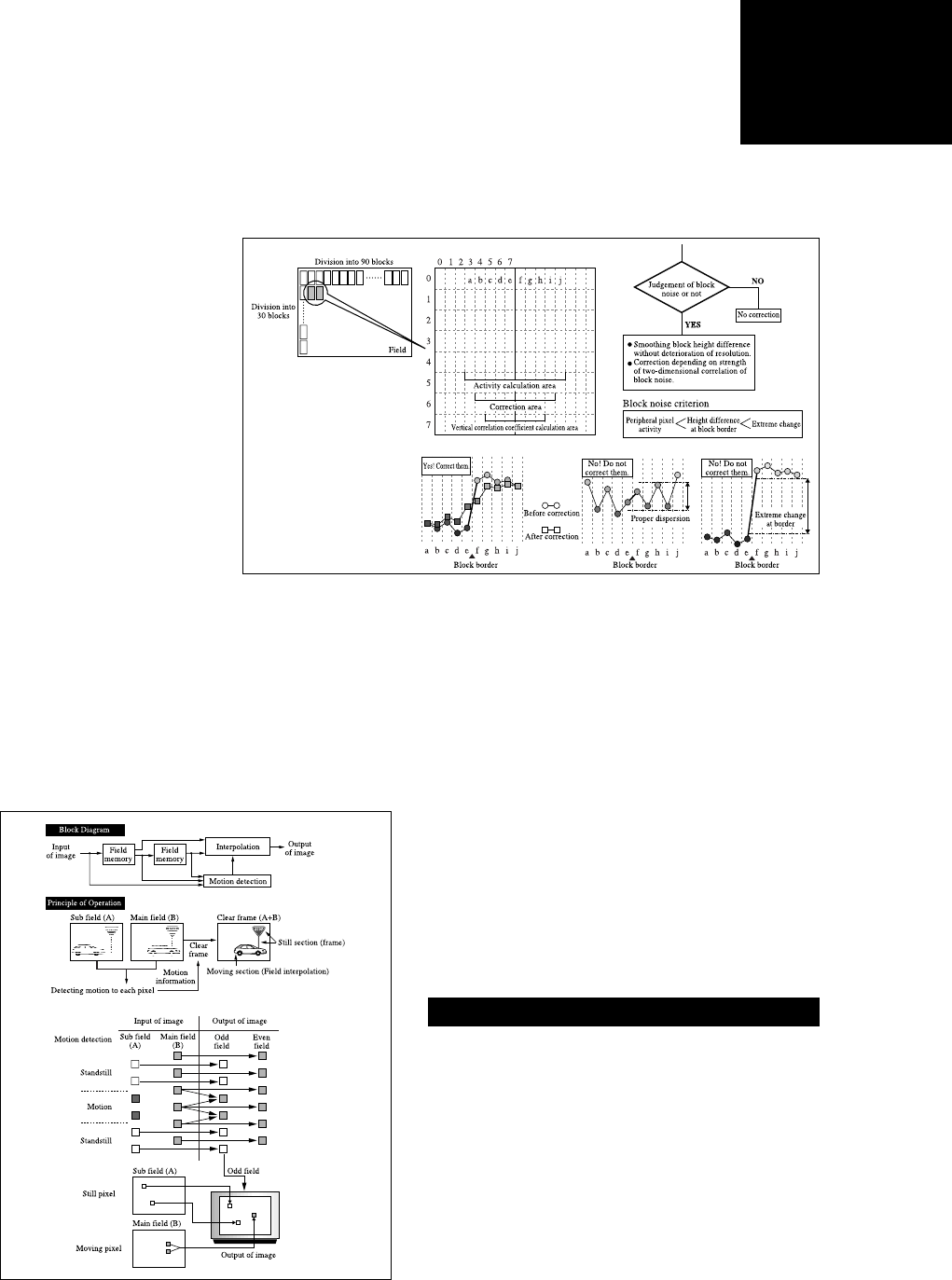
9
DVD Technical Notes
Video
Fig. 8: Detection and correction of block noise. On the left is the DVD block structure. In the center, a pair of blocks, showing
the Activity Calculation Area. Across the bottom are sample readings. The first is a step characteristic of block noise, which
gets corrected to a gradual slope. In the center are random variations, which are passed uncorrected. On the right is a large step
characteristic of a legitimate picture edge. This also passes uncorrected.
border as the Vertical Correlation
Coefficient Area. A larger area,
extending five pixels to the left and
right of the border is the Activity
Calculation Area.
Small, random-seeming changes at the
border are determined to be legitimate
variations in the signal. These are not
changed. Moderate changes arranged
in a line along block borders are deter-
mined to be block noise and are
corrected. However, when the image
hardly changes within five pixels of
the border and undergoes a big change
right at the border, this is considered
to be a legitimate edge in the picture,
and it passes uncorrected.
After detecting block noise, Sony’s MPEG Image Processor must
determine the appropriate corrective action. The correction area
extends four pixels on either side of the border. Correction
consists of smoothing the step of block noise into a more natural,
gradual slope.
For even greater sophistication, the Block Noise Reduction
system takes advantage of the same motion detection engine as
described above for Field Noise Reduction. In essence, the
motion detector tells the Block Noise Reduction circuit, “a car is
approaching the block edge.” When the car arrives, the Block
Noise Reduction system already knows that it’s a legitimate
picture edge and will pass it through without correction.
While we have described Block Noise Reduction for the vertical
block edges, the system works equally well for horizontal block
edges. The result is a comprehensive solution to even subtle
picture errors caused by block noise. Images are clearer and
more natural. The subtle gradations captured by today’s best
cinematographers are rendered with a greater precision and care.
The soft shadows that define a cheekbone, a fold of cloth or a
footprint in the sand come through with effortless clarity.
You can match the operation of Block Noise Reduction to the
condition of each DVD. An on-screen menu offers eight
settings, ranging from 0 (off) to 7 (maximum).
The third and final function of Sony’s MPEG Image Processor is
Clear Frame. As many disappointed VHS users already know,
when you hit the Pause button on a VCR, you see only the
information for a single field. Much of the vertical resolution is
lost. DVD players can perform far better in still mode, because
DVD can present both fields together to represent the entire
video frame.
However, as we discovered in the discussion of 525P outputs, the
parameters of film-originated DVDs are quite different from
those of video-originated DVDs.
• Film-originated DVDs do best with frame pause, because both
video fields represent the same slice of time. The two fields
blend together perfectly for a full-resolution still image.
• Video-originated DVDs capture two fields that represent
different slices of time, 1/60 second apart. To accommodate
Fig. 9: Thanks to motion detection, the Block Noise Reduction circuit “knows” when a
car is approaching the edge of a block and does not try to correct the picture edge.
Clear Frame Still Image Performance


















